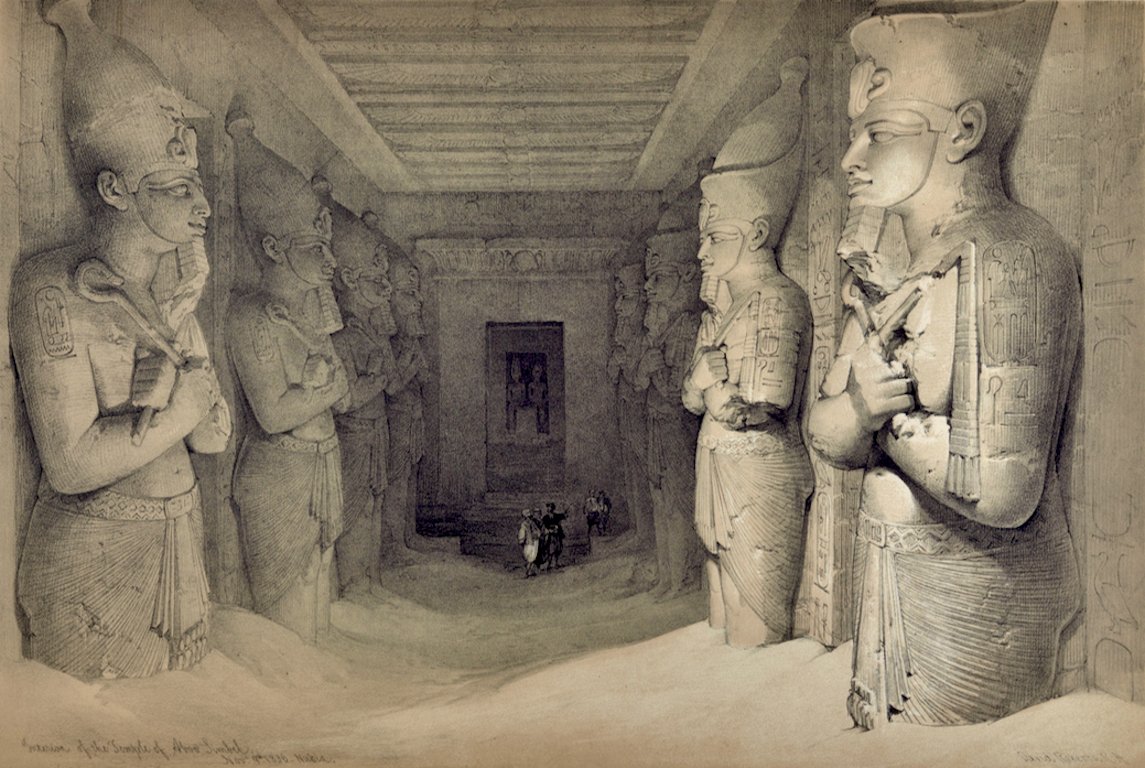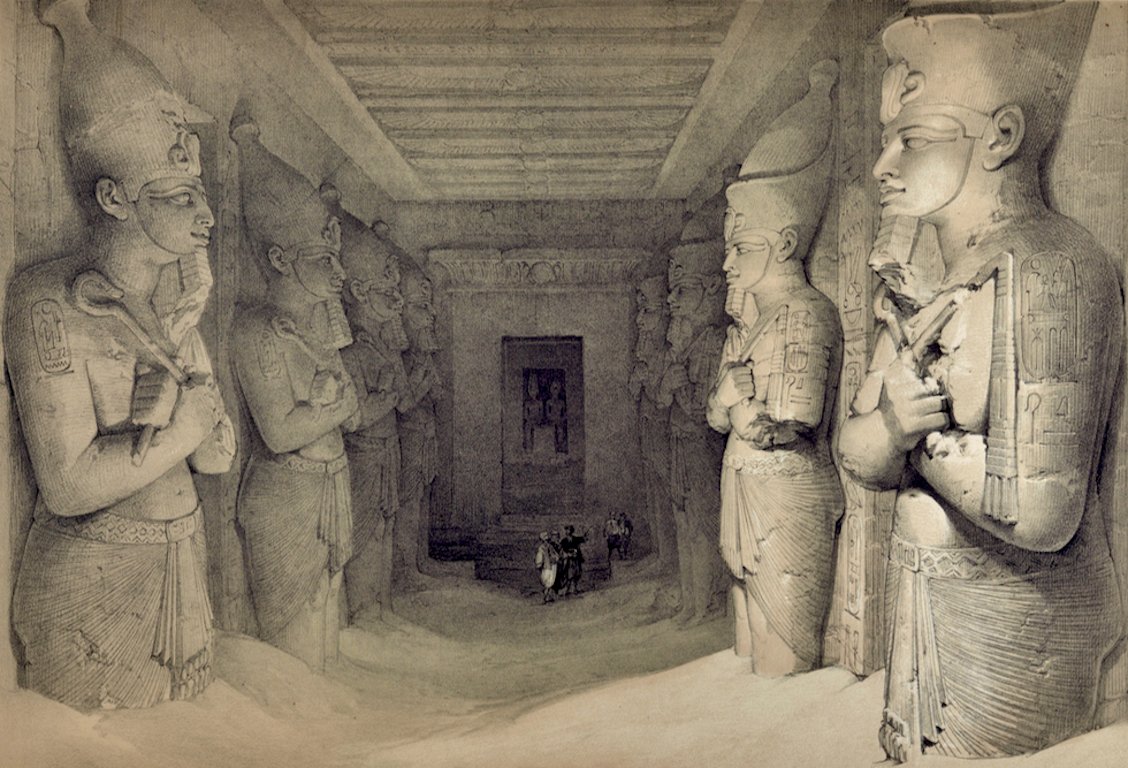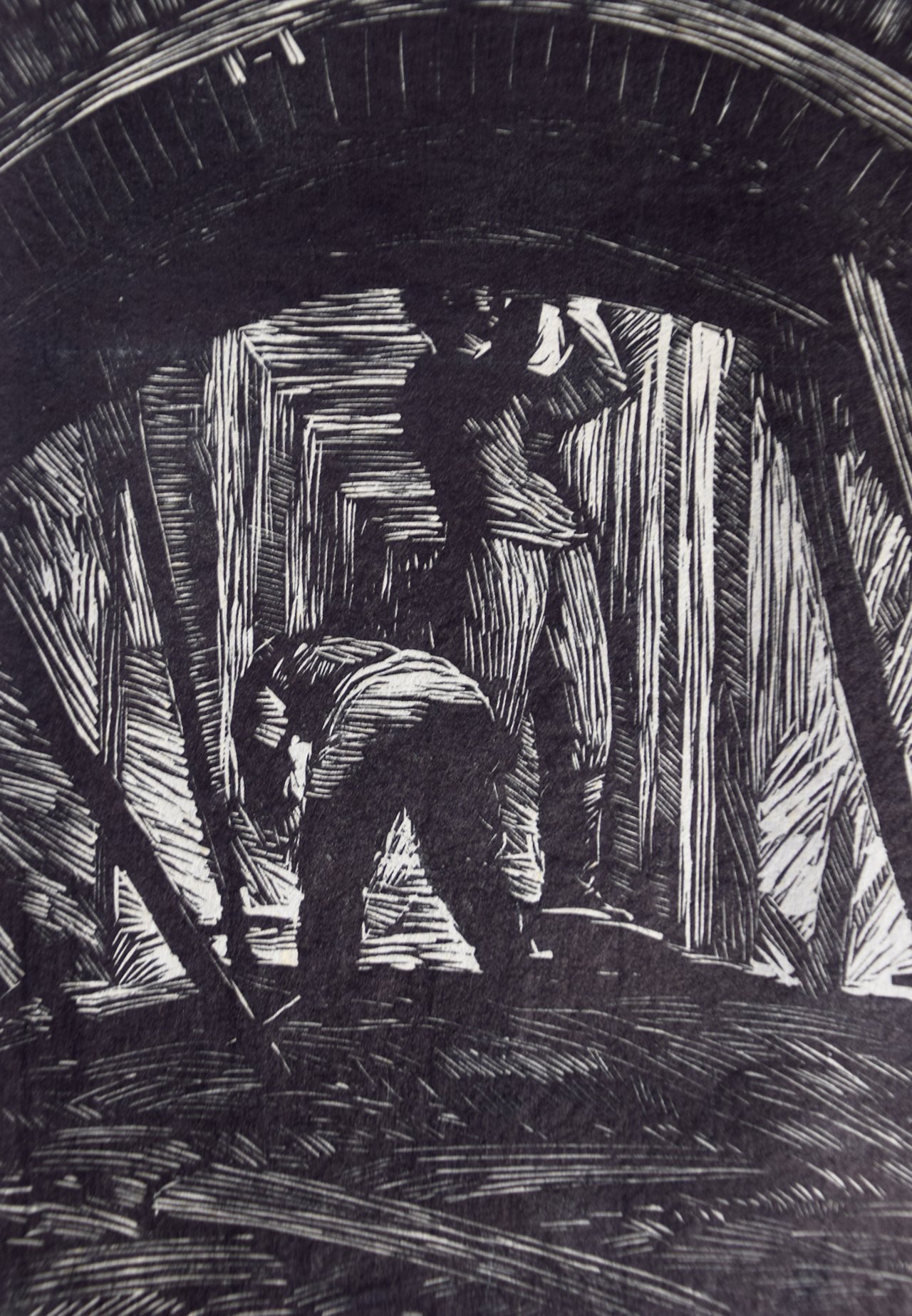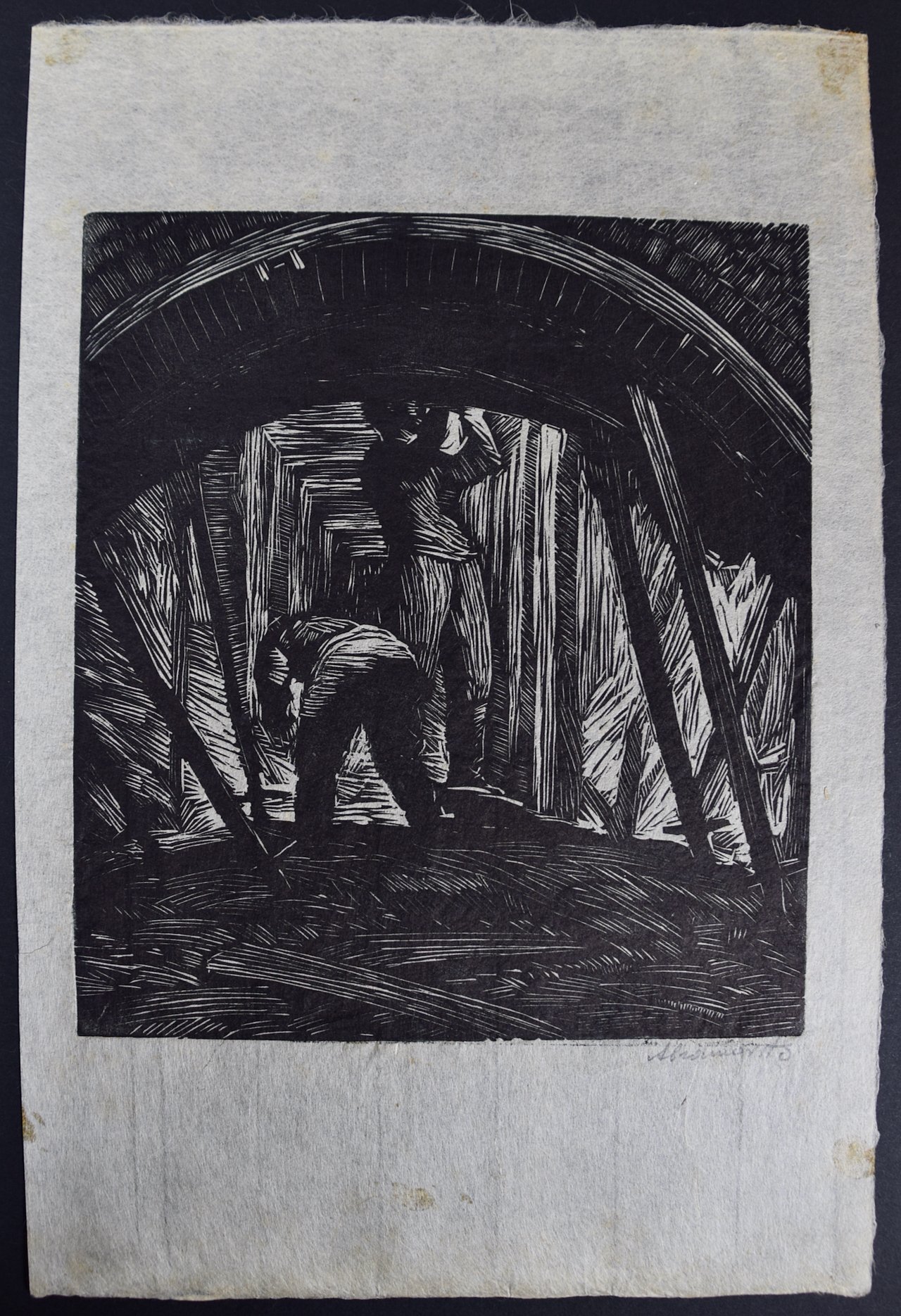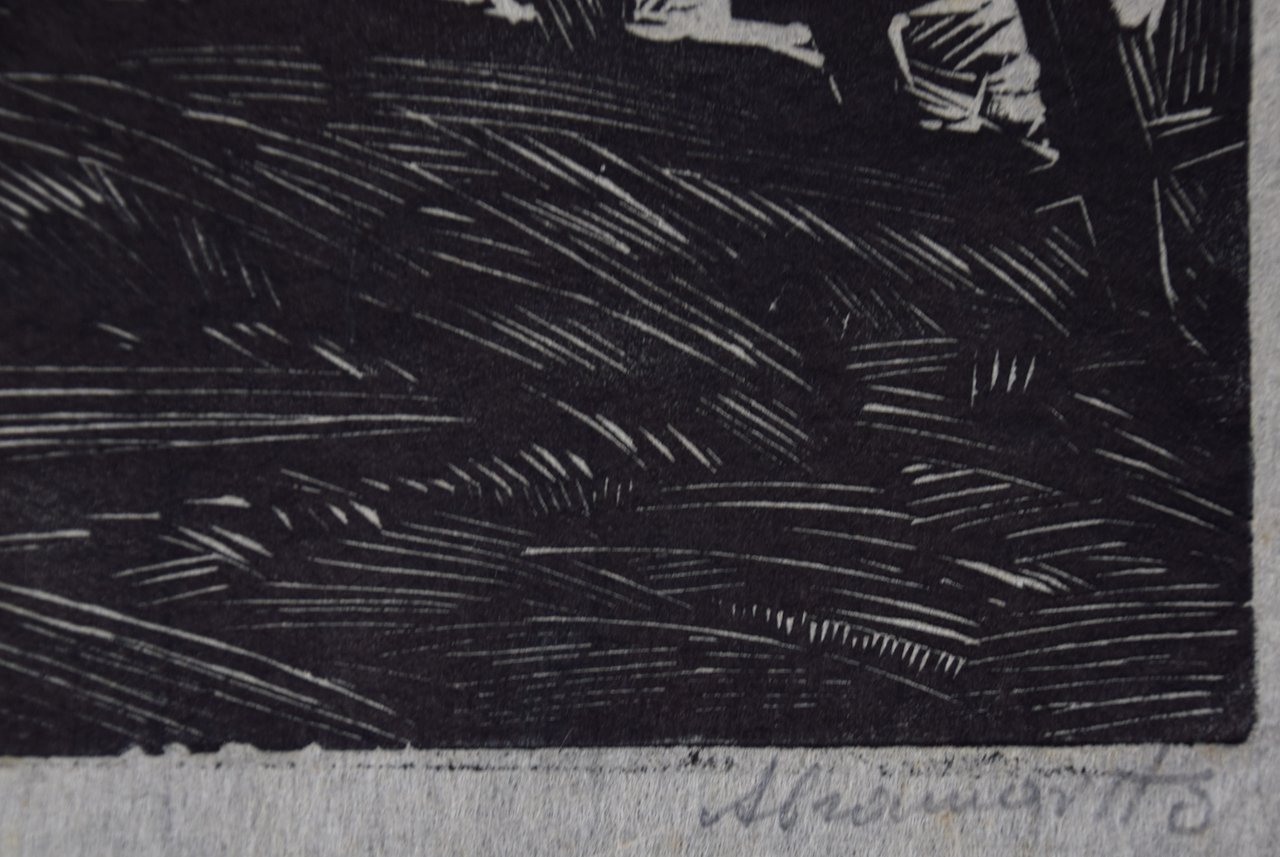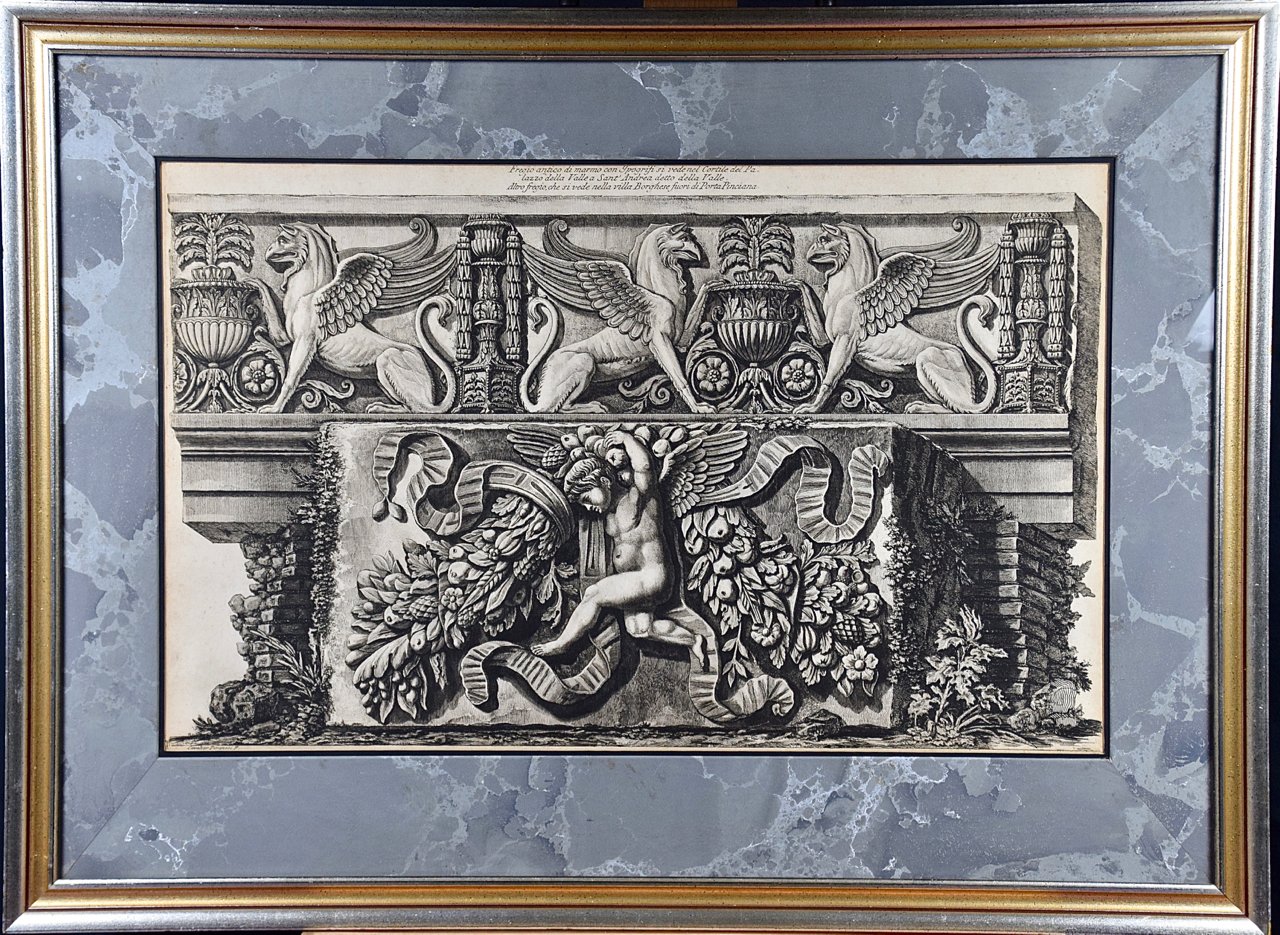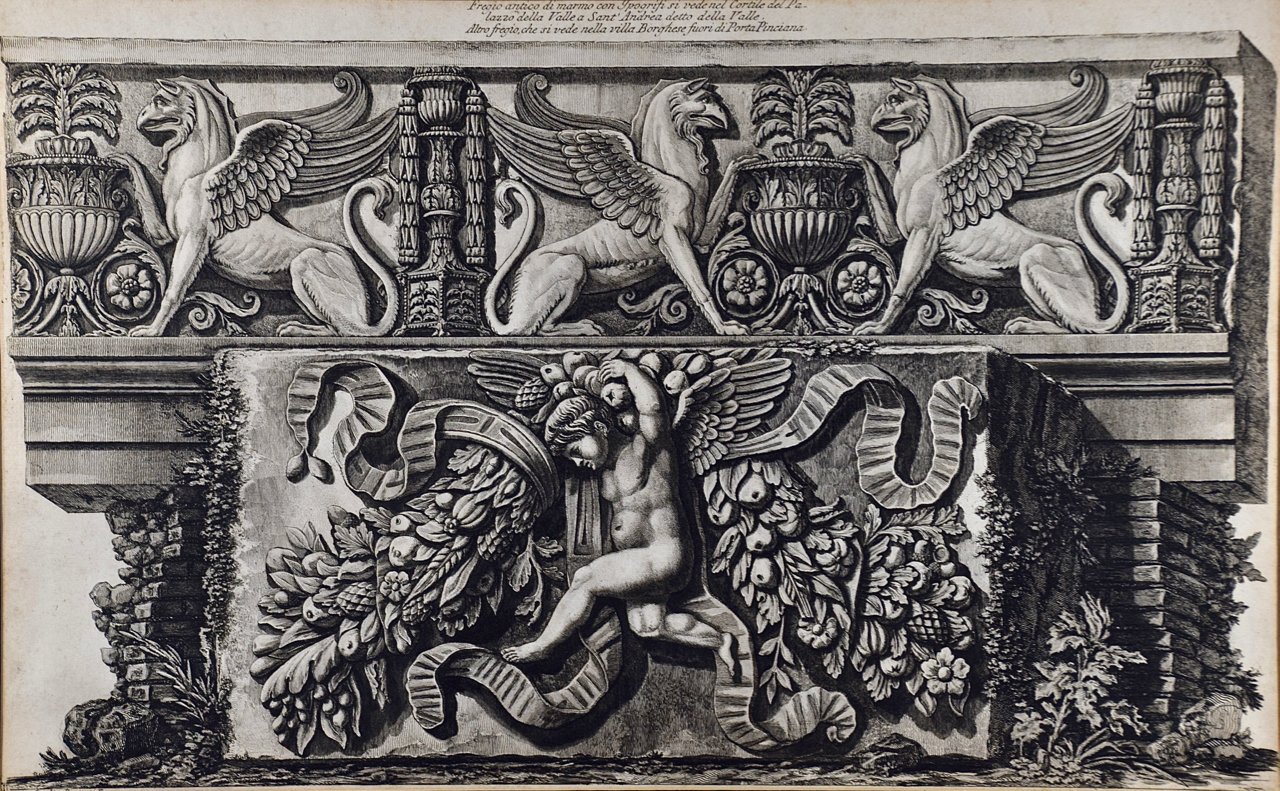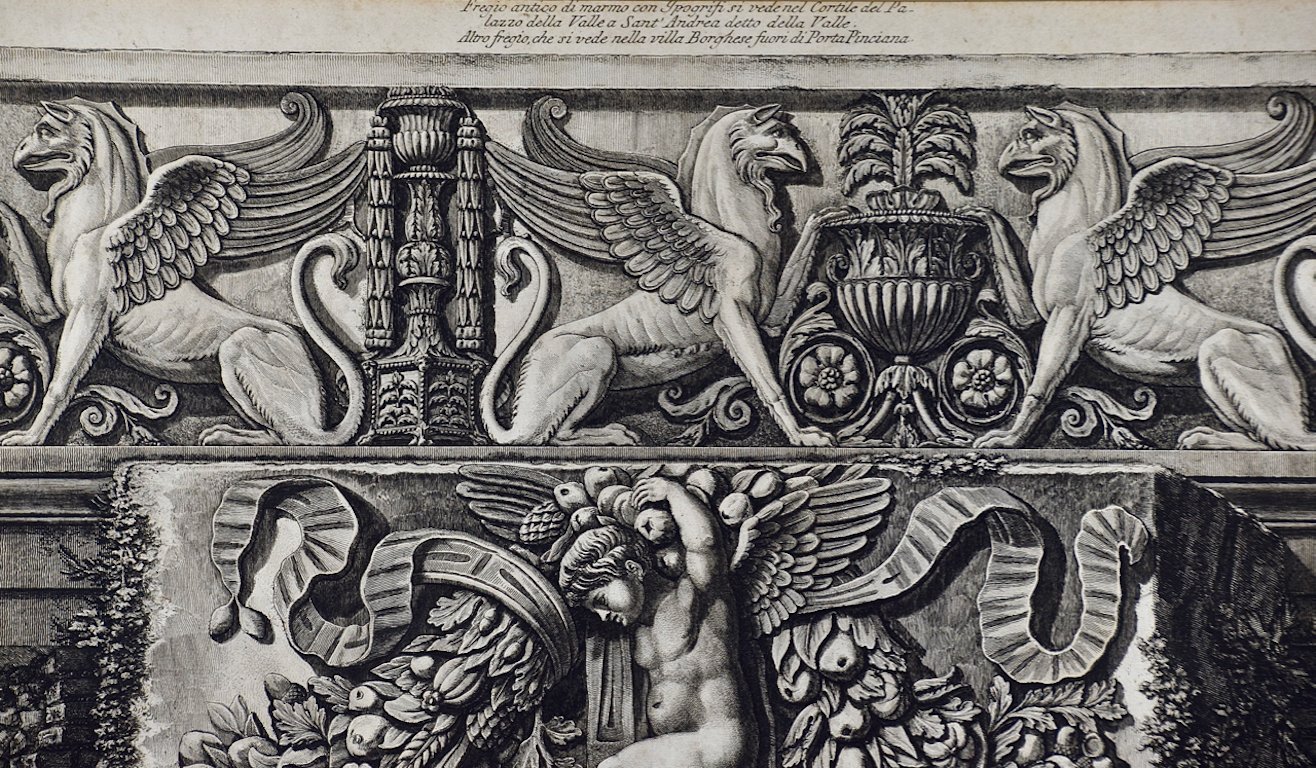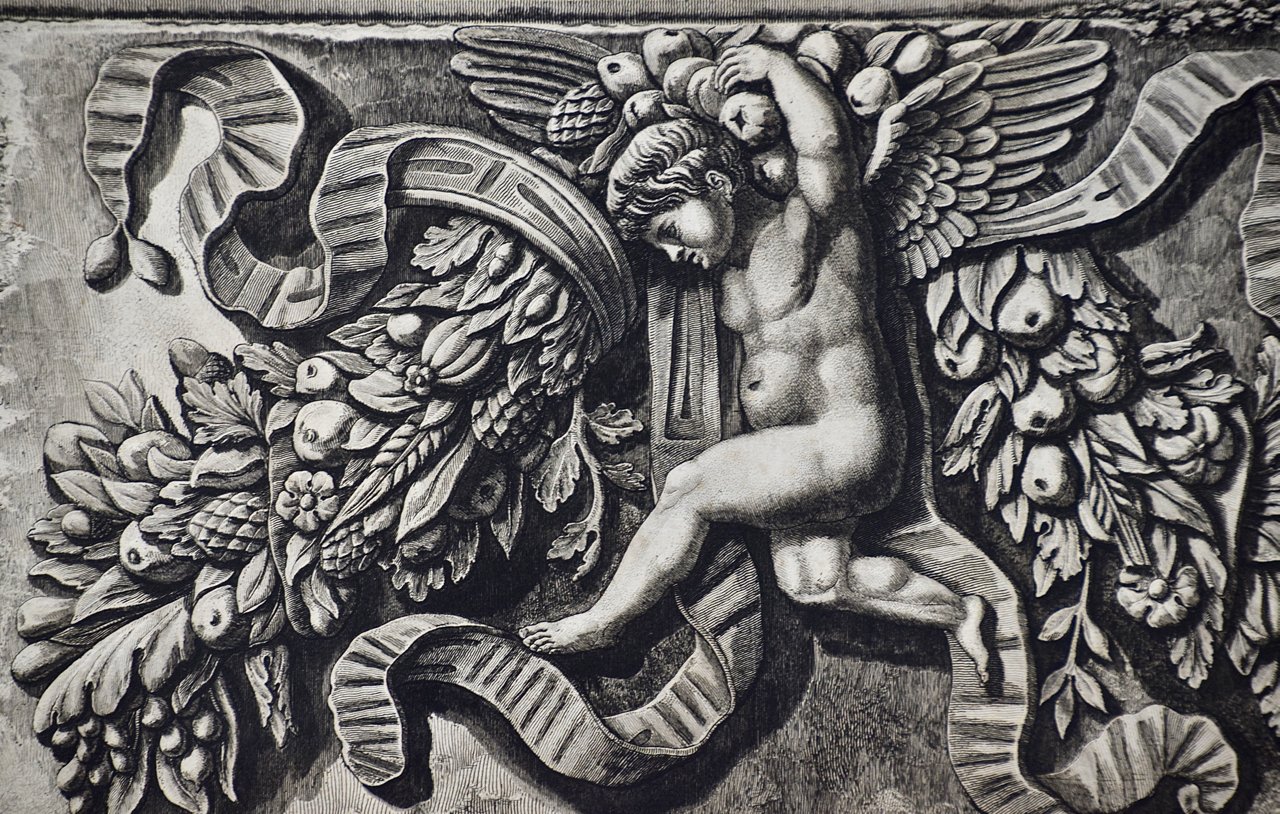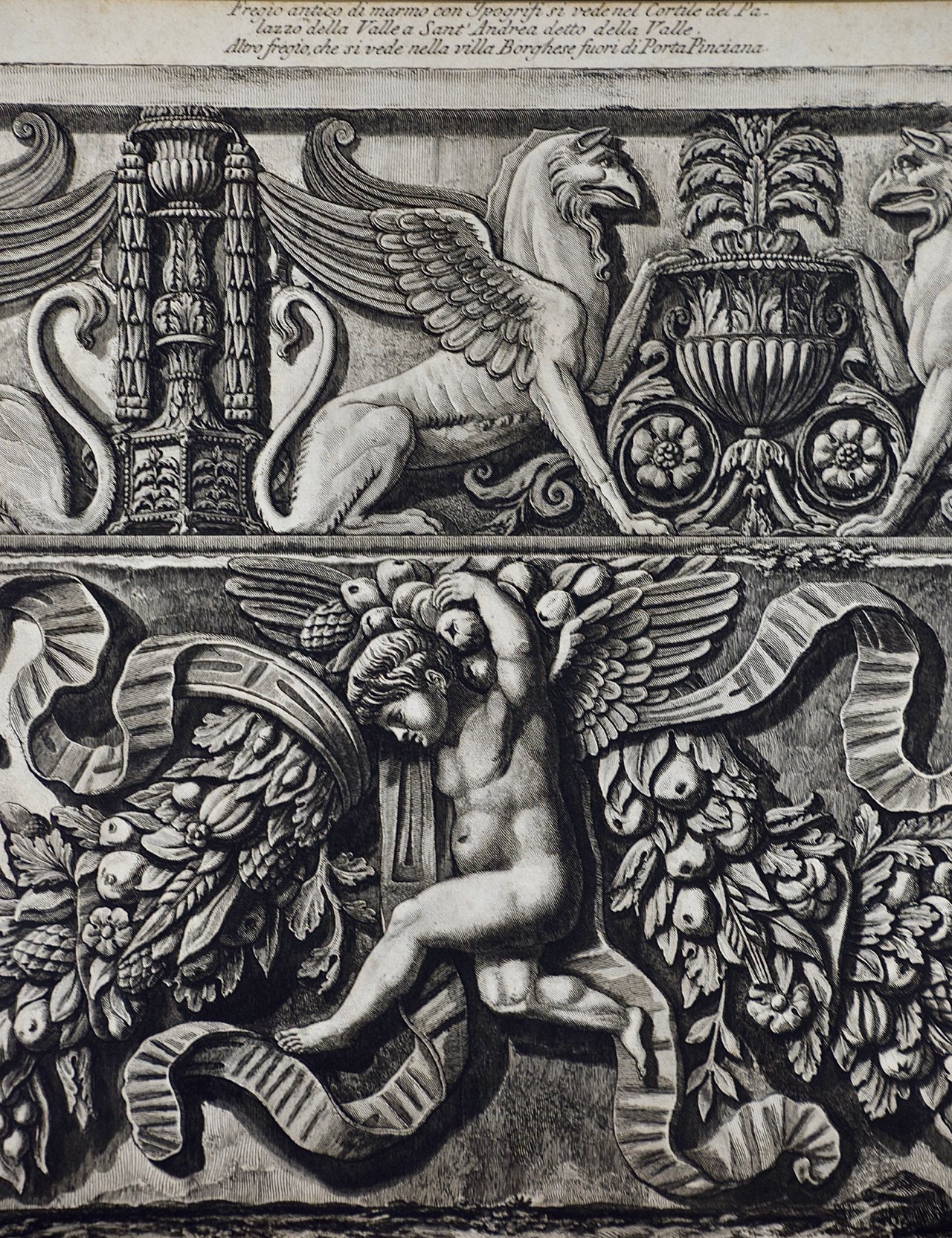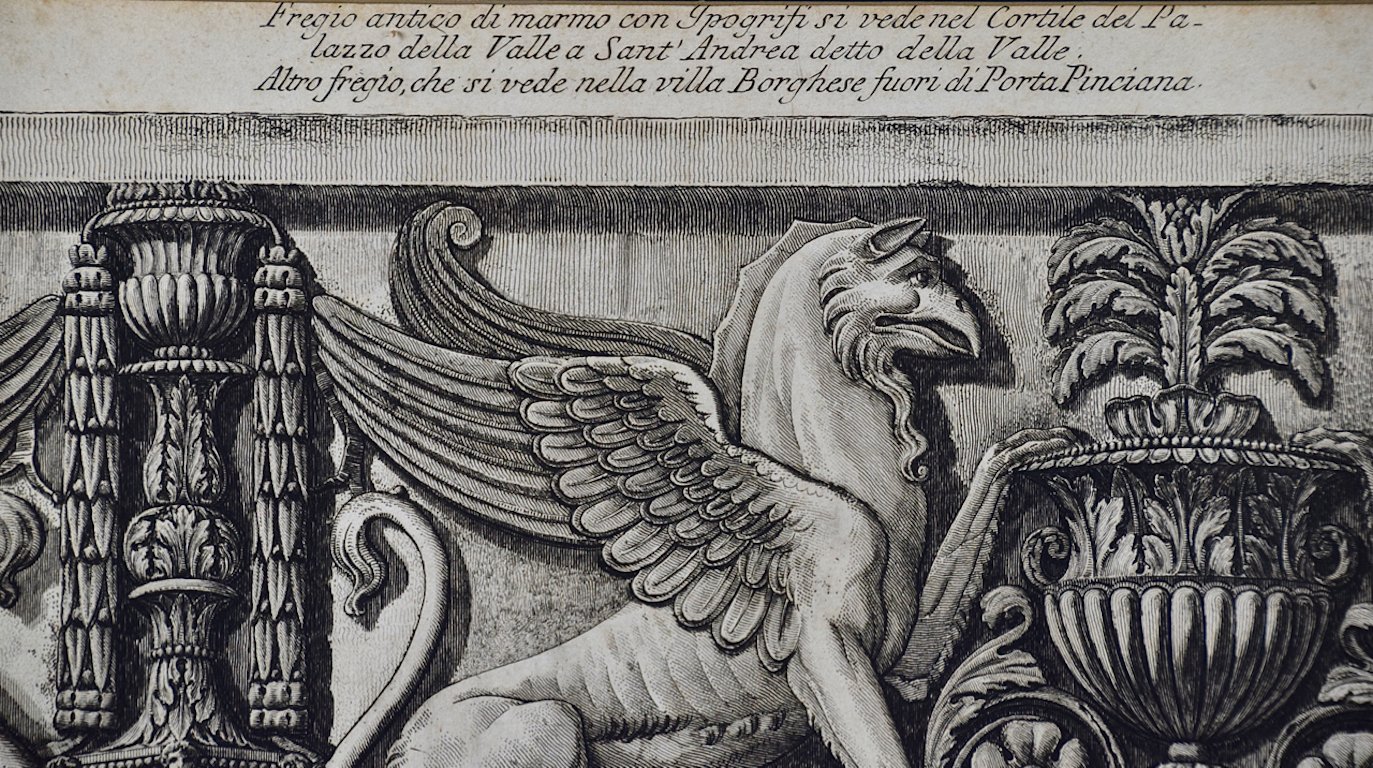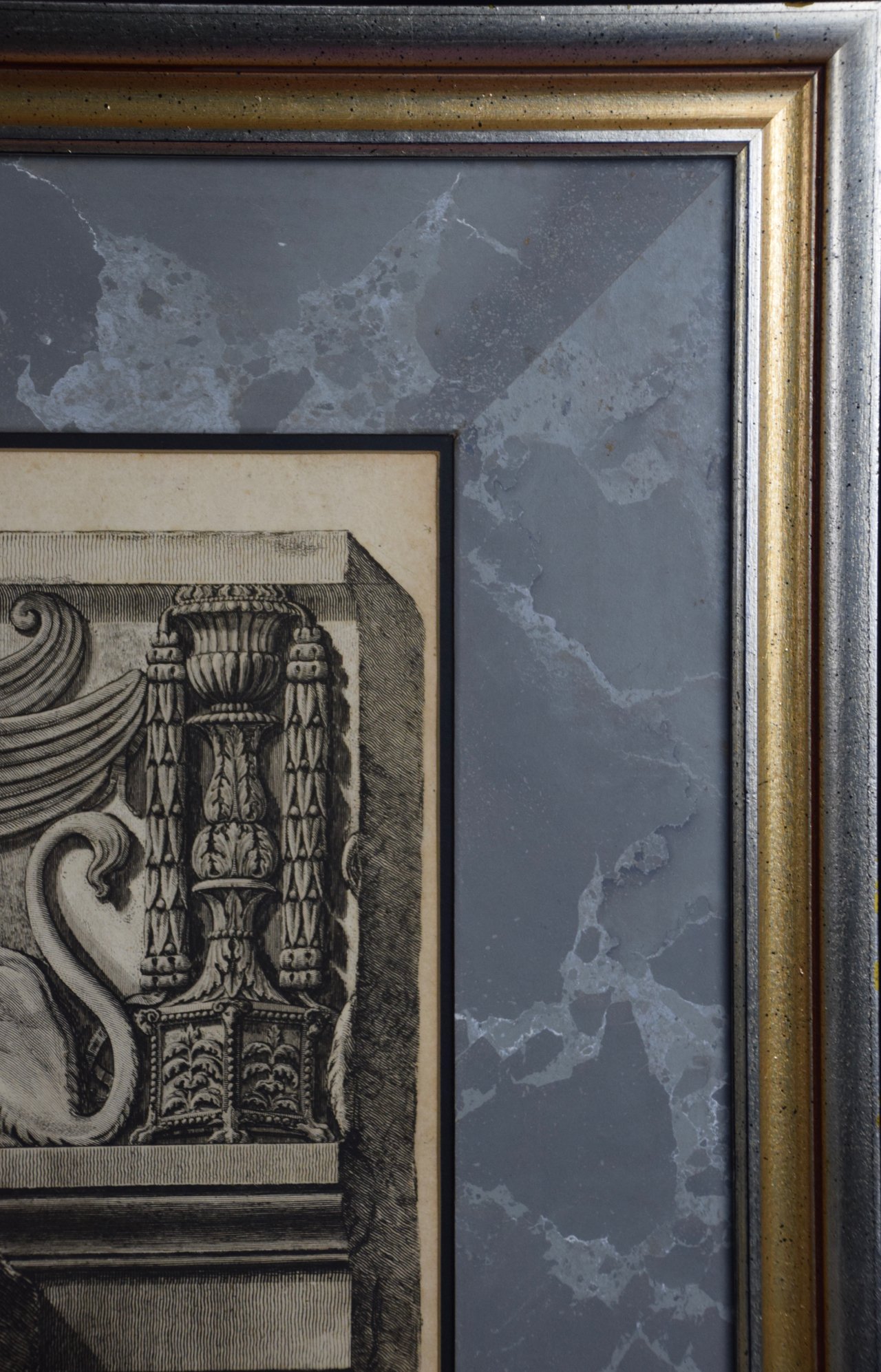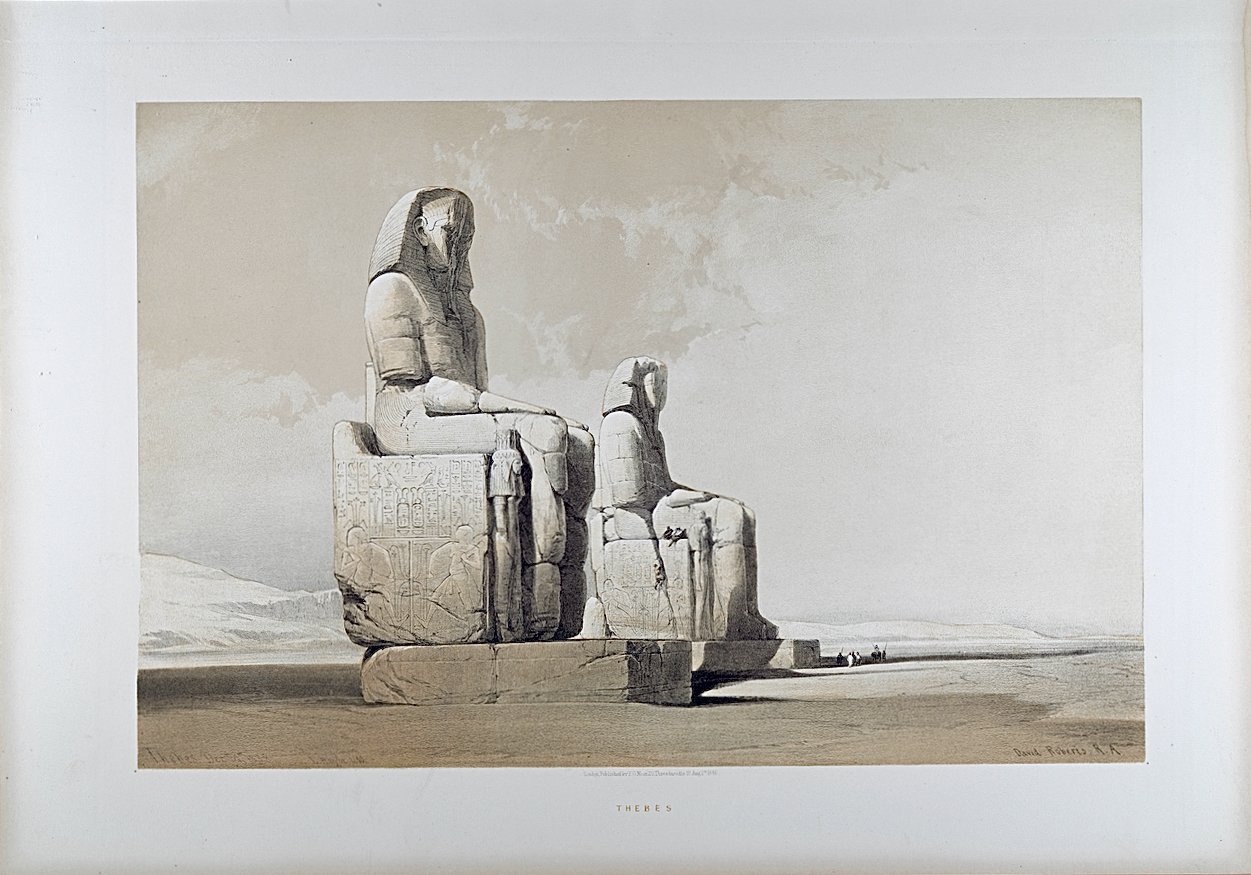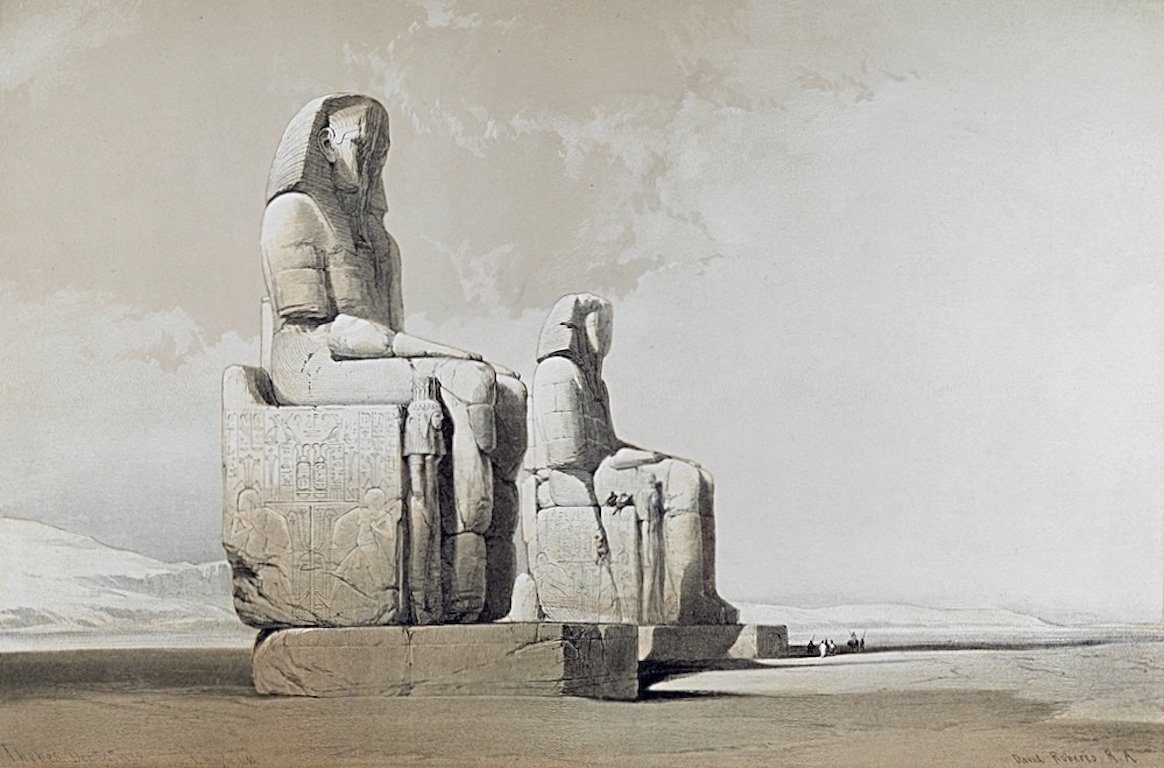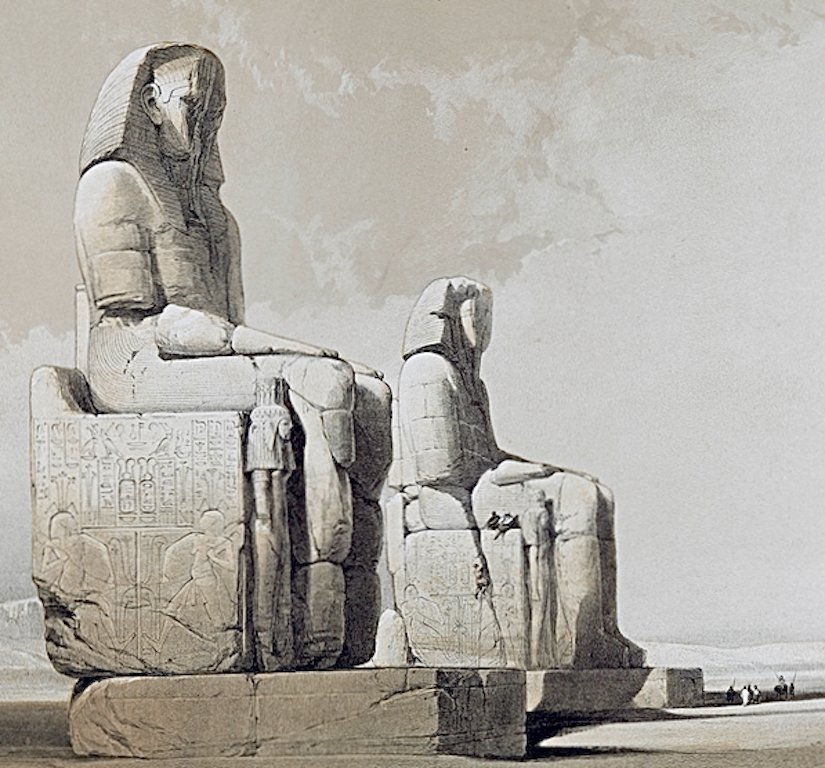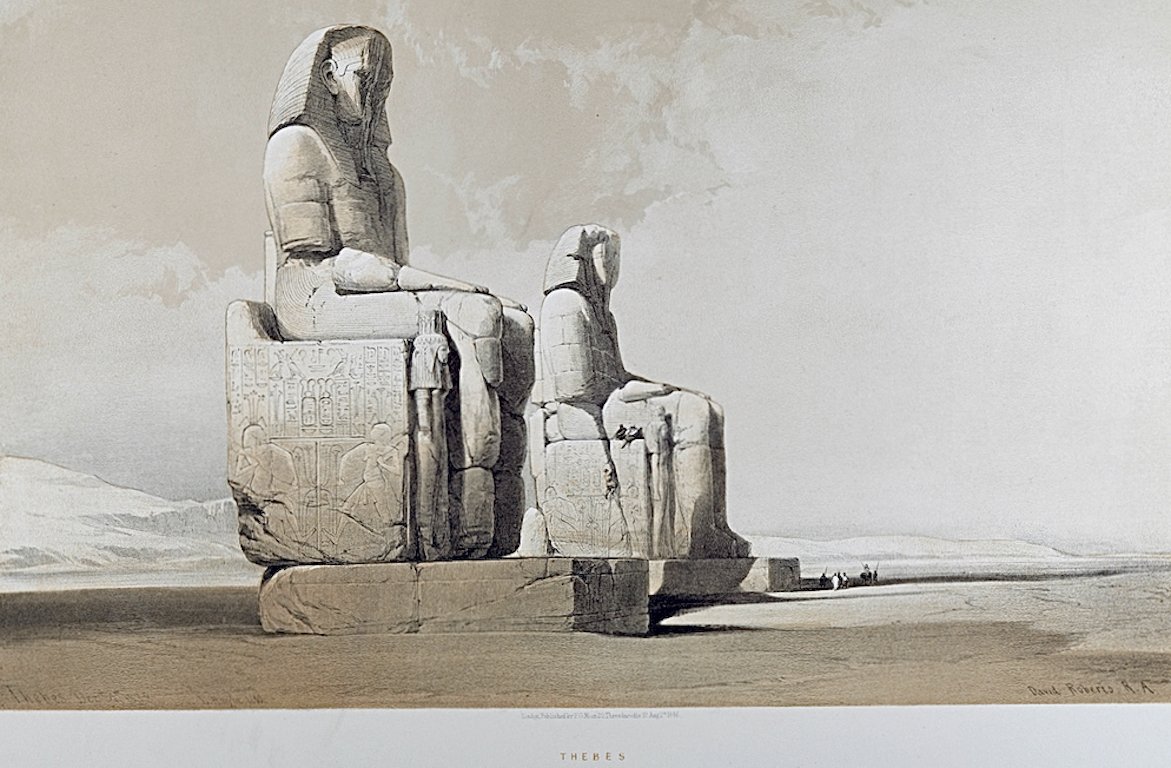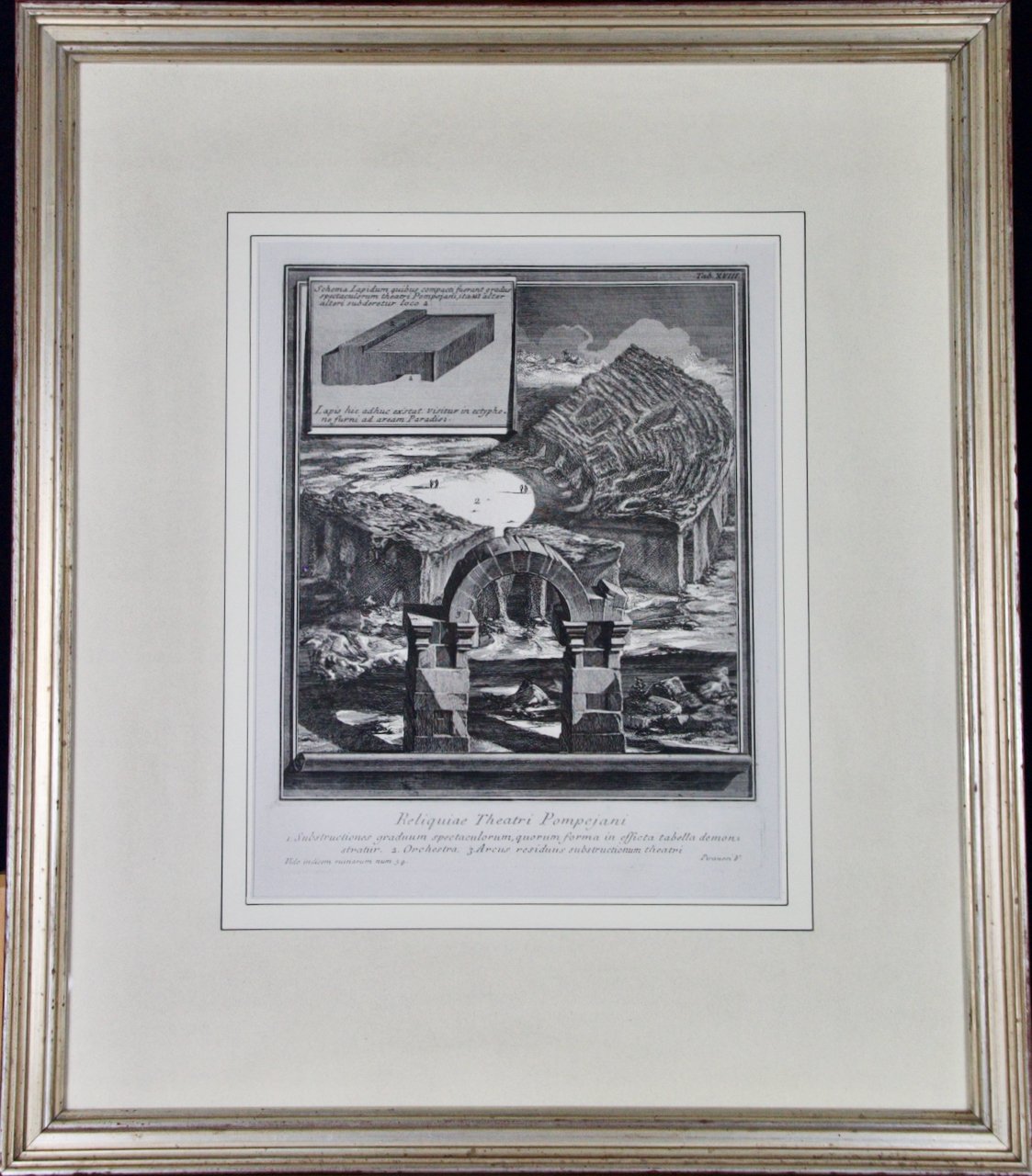These etchings are printed on a thick chain-linked, laid and watermarked paper with wide margins. The sheet measures 22.13" high and 16.13" wide. There is a short crease present in the upper margin, to the right of midline and a horizontal crease in the lower margin of the upper fireplace etching, which may have occurred during the 18th century process of paper manufacture or printing. There are a small number of tiny spots in the margins and mild discoloration centrally, but the print is otherwise in very good condition. The etching is held by many museums, including; The Metropolitan Museum of Art and The Cooper Hewitt Museum Smithsonian Design Museum in New York City. Reference: Wilton-Ely Number 859.
Piranesi was born in Venice in 1720 and died in Rome in 1778. He was the son of a stone mason and was trained as an architect. After a slow start he eventually achieved great success as an architect, archaeologist, artist, designer, collector, and antiquities dealer. His mission was to glorify the architecture of ancient Rome through his engravings and etchings. His highly dramatized prints often depict imaginary interiors and frequently include figures in mysterious activities, who are dwarfed by the magnitude of their monumental surroundings.
Piranesi's studies of the antiquities of Rome was one of the great archaeological, historical and artistic works of its era. His style greatly influenced the neoclassical art movement of the late 18th century. His dramatic scenes inspired generations of set designers, as well as artists, architects, writers and historians. In 1757 Piranesi was elected as an Honorary Fellow of the Society of Antiquaries. His prints have continued to increase in value to institutions and collectors.









